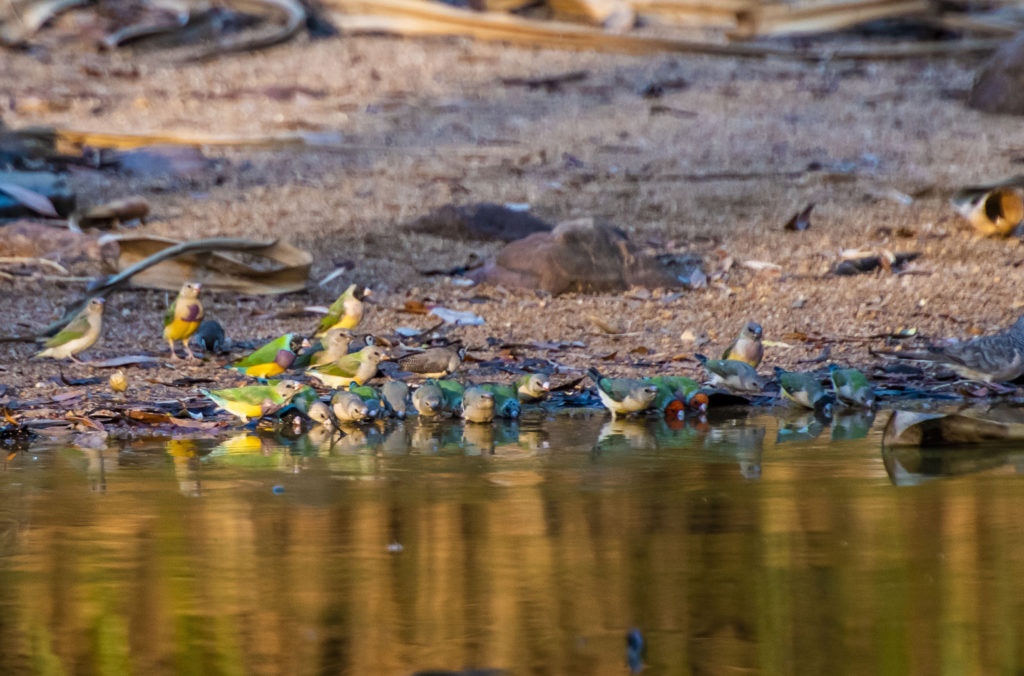Keywords: finches, Gouldian Finch, Gouldian Finches, threatened species, terrestrial monitoring, waterholes, dry season, wet season, management, EPBC, IUCN, high cultural value, logsitcal challenges, Top End, NT, northern Territory, Northern Territory Government, environmental DNA, eDNA, e-DNA, e DNA, environmental assessments, logistically challenging, CDU, RIEL, Charles Darwin University
Animals leave DNA traces of their presence in hair, skin, urine, faeces, sperm and eggs that are shed into their surrounding environment. This DNA can be found in the environment for a short time even after visible traces have disappeared, and is called eDNA.
This project showed, for the first time, that eDNA can be used to detect the presence of an endangered bird species simply by collecting a cupful of water from the pools where they drink.
The research developed a genetic probe that targets and identifies eDNA of the endangered Gouldian finch (Erythrura gouldiae), a rainbow-coloured grassfinch endemic to the savanna woodlands of northern Australia.
Gouldian finches live in small and mobile groups, making them difficult to find using standard survey methods. This new eDNA test for Gouldian finches will help the Northern Territory Government in their regional wildlife surveys.

Gouldian finches drinking at a waterhole in the Northern Territory. Photo: NESP Northern Australia Hub.
The Northern Australia Environmental Resources Hub addressed key research questions to come up with practical, on-ground solutions to some of the north’s most complex environmental challenges. A transdisciplinary research approach has been at the heart of the hub. Integrating key research users – policy-makers and land managers including Traditional Owners and ranger groups – into the co-design of research projects has led to rapid uptake of research outcomes into land management practices and decision-making. The hub has produced this wrap-up video outlining these impacts from the perspectives of research users.
Project leader, Professor Karen Gibb, provides an update on the Developing eDNA methods to detect Top End animals project at the 2018 TNRM conference.
This project was led by Professor Karen Gibb from Charles Darwin University and Dr Alaric Fisher from the Northern Territory Department of Environment, Parks and Water Security.
Professor Simon Jarman (The University of Western Australia) led the bioinformatics and initial probe design.
Professor Gibb and Dr Fisher were being assisted by researchers from Charles Darwin University and the NT Department of Environment, Parks and Water Security.
This project was completed in December 2021.
Contact
Karen Gibb, Charles Darwin University, karen.gibb@cdu.edu.au
Alaric Fisher, Northern Territory Government, alaric.fisher@nt.gov.au